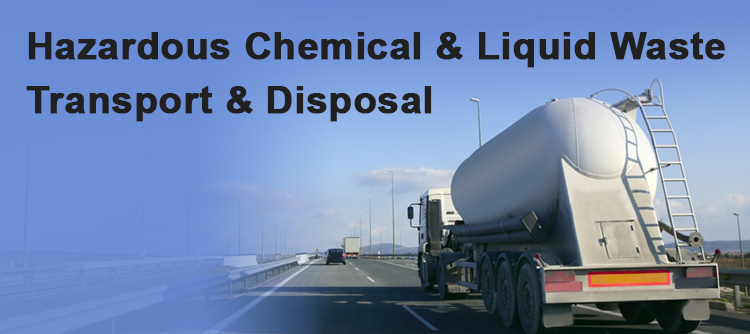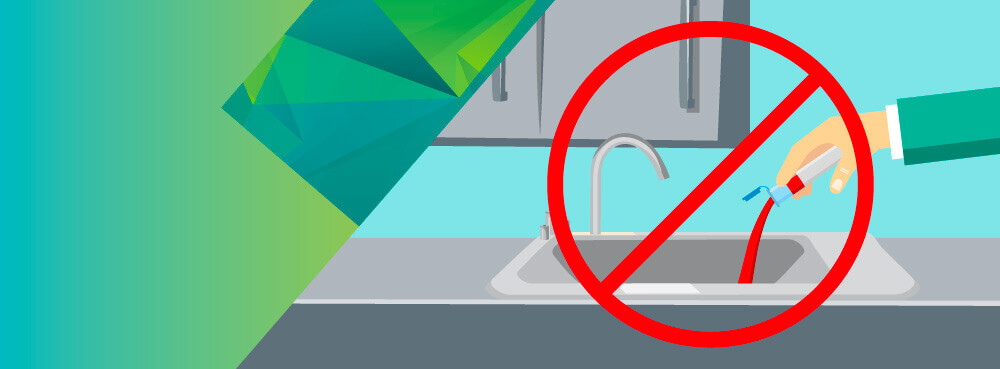How Fluid Garbage Disposal Works: A Comprehensive Summary of Methods and Technologies Employed

Introduction of Liquid Waste Kind
The complexity of fluid waste types requires an extensive understanding of their features and ramifications for disposal. Liquid waste can extensively be categorized into numerous kinds, including industrial, community, farming, and dangerous waste. Each classification exhibits distinctive residential or commercial properties, calling for particular management strategies to alleviate ecological and health threats.
Industrial liquid waste stems from producing processes and often includes a range of pollutants, such as heavy steels, solvents, and natural substances. Local fluid waste, largely consisting of wastewater from families and commercial facilities, includes natural issue, nutrients, and microorganisms (industrial wastewater treatment). Agricultural liquid waste, including overflow from ranches, might consist of fertilizers, pesticides, and animal waste, positioning risks to water quality and ecosystems
Dangerous fluid waste is defined by its toxicity, reactivity, or possible to trigger damage. This category consists of substances like acids, bases, and particular chemicals that demand rigorous handling and disposal protocols. Comprehending these varied liquid waste kinds is important for establishing effective disposal techniques and making sure compliance with environmental policies. Proper classification and characterization are important for executing proper treatment techniques and reducing the damaging influence on public health and wellness and the setting.
Physical Therapy Methods

Testing is the initial step, where bigger particles and particles are eliminated from the liquid waste making use of screens or grates. In sedimentation tanks, heavier bits work out at the bottom, forming a sludge layer, while the made clear liquid can be further treated.
Filtering is one more important method that involves passing the liquid via permeable products, such as sand or membrane layers, to record smaller sized fragments. This step improves the quality of the fluid, making it suitable for succeeding treatment processes.

Chemical Therapy Strategies
Chemical treatment methods are important for successfully taking care of liquid waste, specifically in resolving liquified and colloidal impurities that physical methods may not effectively get rid of. These methods use various chemical representatives to reduce the effects of, speed up, or transform dangerous materials into less dangerous forms.
One usual approach is coagulation and flocculation, where chemicals such as alum or ferric chloride are included in promote the gathering of put on hold bits. This procedure enhances sedimentation, enabling much easier removal of the resulting sludge. Furthermore, oxidation processes, employing representatives like chlorine or ozone, are employed to damage down complicated organic substances and microorganisms, making the waste more secure for discharge or more treatment.
Neutralization is another important strategy, which readjusts the pH of acidic or alkaline waste streams to neutral degrees, protecting against potential injury to downstream systems and the environment. Additionally, progressed oxidation processes (AOPs) use combinations of oxidants and ultraviolet light to deteriorate relentless pollutants, accomplishing a greater level of therapy effectiveness.
Biological Therapy Procedures
Biological therapy processes play a critical function in the monitoring of fluid waste by utilizing microbes to decompose organic matter and lower contaminant levels. These procedures can be extensively categorized into cardio and anaerobic therapies, each utilizing certain microbial neighborhoods to attain efficient waste destruction.
Cardio therapy includes making use of oxygen to help with the malfunction of natural materials by germs. This process is generally carried out in triggered sludge systems, where oygenation storage tanks give a helpful setting for microbial growth, causing the oxidation of natural contaminants. The resultant biomass can be divided from treated effluent with sedimentation.
In contrast, anaerobic therapy occurs in the absence of oxygen, counting on different bacteria to break down raw material. This approach is particularly useful for high-strength waste, as it creates biogas, an eco-friendly power source, while decreasing sludge production. Technologies such as anaerobic digesters are frequently employed in metropolitan and commercial applications.
Both cardio and anaerobic biological therapies not only lessen the ecological effect of liquid waste but additionally assist in source recuperation, making them vital parts of lasting waste monitoring methods. Their flexibility, efficiency, and performance sustain their prevalent execution across different sectors.
Emerging Technologies in Disposal
Ingenious techniques to liquid waste disposal are rapidly developing, driven by innovations in innovation and an enhancing emphasis on sustainability. Amongst these arising modern technologies, membrane layer bioreactors (MBRs) have gained grip for their hop over to these guys capability to incorporate organic treatment with find here membrane filtration, leading to high-grade effluent that can be reused in different applications. MBRs enable smaller impacts and much more efficient operations contrasted to typical systems.
Another appealing growth is making use of anaerobic digestion integrated with nutrient healing technologies, which not only deals with liquid waste but also generates biogas and recuperates beneficial nutrients like nitrogen and phosphorus. This dual benefit improves resource performance and reduces ecological effect.
In addition, progressed oxidation processes (AOPs) are being embraced for the degradation of intricate organic pollutants. These techniques use powerful oxidants and drivers to damage down contaminants at the molecular degree, providing a very effective service for tough waste streams.
Moreover, the integration of fabricated knowledge and machine learning in waste management systems is enhancing functional efficiency and predictive maintenance, bring about reduced costs and boosted environmental compliance. These modern technologies mirror a considerable shift towards even more lasting and reliable fluid garbage disposal practices.
Final Thought
In conclusion, effective fluid waste disposal requires a comprehensive understanding of various methods and innovations. By continually advancing these methodologies, it becomes possible to deal with the expanding obstacles linked with liquid waste, eventually contributing to ecological security and resource recuperation.
Fluid waste disposal is a critical element of environmental management, calling for a detailed understanding of various techniques and innovations tailored to different waste kinds. Liquid waste can generally be classified right into you can try this out numerous types, consisting of commercial, community, farming, and harmful waste. Agricultural fluid waste, consisting of drainage from farms, may consist of fertilizers, chemicals, and pet waste, posing threats to water quality and environments.
Various physical treatment approaches play an essential duty in taking care of fluid waste efficiently - industrial wastewater treatment.In final thought, effective liquid waste disposal requires a detailed understanding of various strategies and innovations